Ground cover plants for the garden: types and cultivation
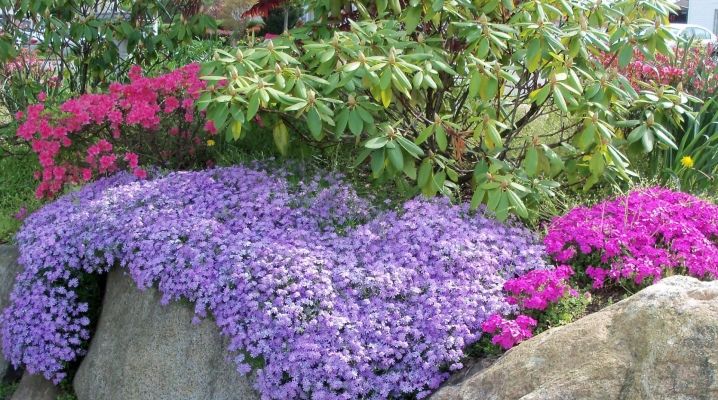
When they talk about decorating the garden and the adjoining space, they often reduce it to the use of very tall and medium-sized plants. But ground cover crops can look just as good. The main thing is to use them correctly.
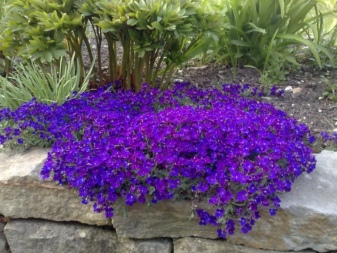

Peculiarities
Many people know about ground cover plants for the garden only that they are small in height and usually spread along the ground. But we must understand that not everything is so simple and easy to arrange. Do not confuse ground cover and carpet plants. The ground cover crops themselves, in the proper sense of the word, are used for the following purposes:
- decorating bad looking places;
- filling empty space;
- increasing the attractiveness of the tree trunk circle.
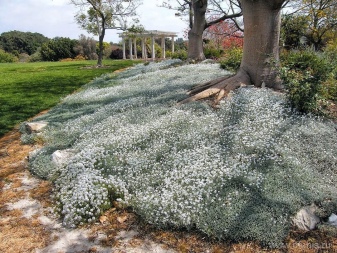
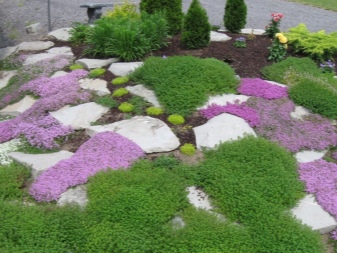
The height of a ground cover plant can reach 0.15-0.3 m. They are distinguished by decent decorative qualities and successfully suppress weeds.
Additionally, the benefits of such crops are associated with such moments:
- protection of fertile soil layers from wind and water carryover;
- covering up all the shortcomings of the site;
- giving the territory an externally well-groomed appearance;
- saturation of the soil with oxygen;
- increased fertility;
- keeping moisture in the ground and keeping it from overheating in the heat.
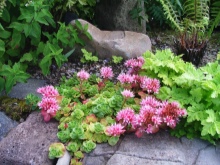
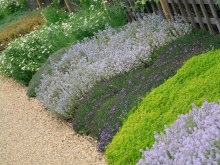
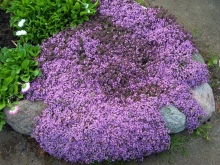
Species overview
Perennial
One of the first places among ground cover perennials is deservedly the subulate phlox. He also has another name - moss carnation. This culture comes from the New World. The popularity of the species is associated with decent decorative qualities. And the epithet "subulate" is given because of the rigidity of the lanceolate foliage, which really resembles an awl.
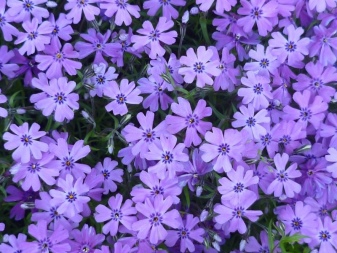
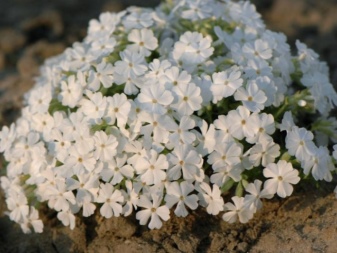
Wild specimens often inhabit:
- stony flat areas;
- crevices of rocks;
- sandy hills.
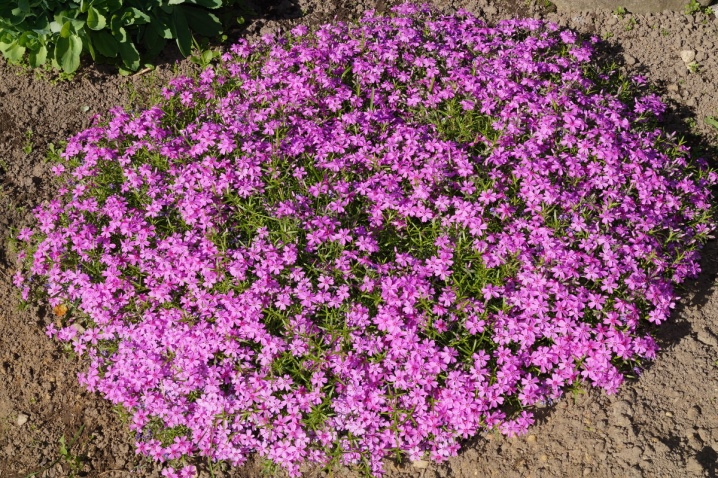
The height of the subulate phlox does not exceed 0.15 m. Its creeping shoots are strewn with medium-sized foliage. Peduncles contain 1 or 2 buds. The flowers are pink, lilac or snow-white in color, in all three variants a purple hue can be traced.
Subulate phlox bloom profusely, and taking into account the repeated flowering, this process covers the whole summer.
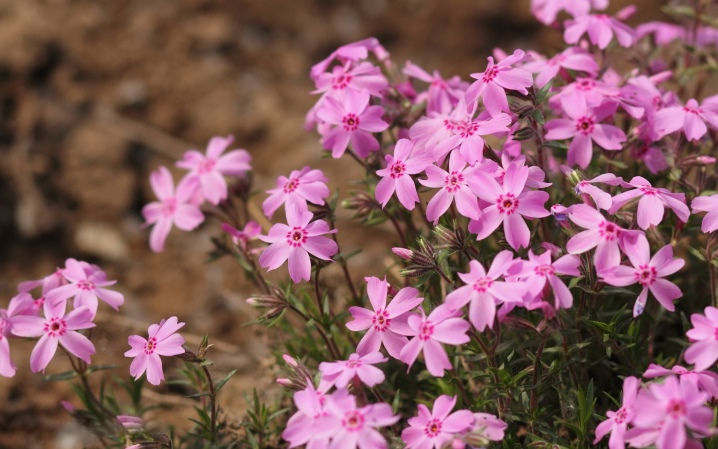
Quite often you can hear about sedum (its other name is sedum). Biologists refer this shrub to the fatty family. It has fleshy foliage that is not only green, but also reddish and sometimes even brown. The sedum plant does not require any complex care and can develop on almost any land. However, it will look most beautiful in sunny areas. Importantly, when several types of sedum are planted at once, you can get an attractive floral carpet that lasts all summer.
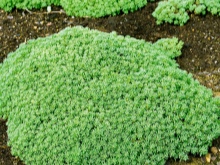
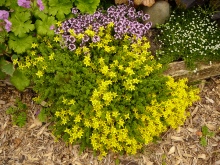
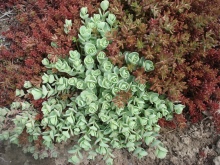
Aubrietta flowers also look beautiful. The height of this plant does not exceed 0.15 m. When the time of flowering comes, all the green parts are densely covered with colorful bright petals. The culture is characterized by a hemispherical configuration, which allows it to be used in alpine slides and rock gardens.
Aubrietta tolerates severe frosts well, but needs good lighting.
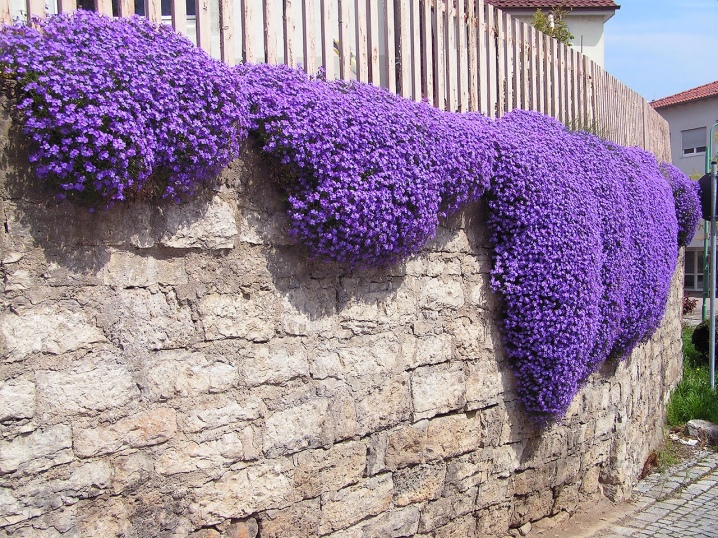
Stagnant water is bad for this plant. The shrub will bloom twice during the growing season. Long-lasting flowering is ensured by formative pruning. From cut healthy shoots, new growth can be obtained.
Bryozoan also demonstrates good decorative qualities. (she is Irish moss). This crop is mainly used to decorate lawns and rocky gardens.Bushes are very low (up to 0.08 m maximum). They form dense green cushions that respond well to formative pruning. Irish moss shoots spread. Miniature snow-white flowers develop on them, growing not in inflorescences, but strictly singly. Bryozoan develops equally well in the shade and in sunny areas. It has no special requirements for land.


Acene is also sometimes grown. This perennial has relatively small, odorless red or burgundy flowers. Its foliage is also impressively decorative.
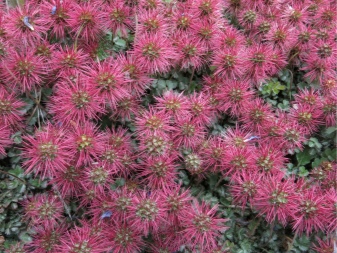
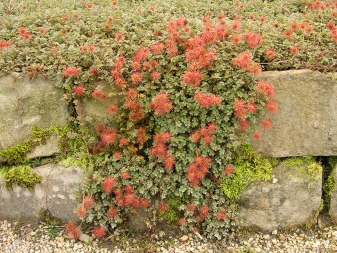
Annuals
The undisputed leadership among ground cover annuals belongs to the lobularia. It is characterized by an abundance of bright flowers exuding a very delicate aroma. An overgrown lobularia will close almost all the space that is available to it. Florists can plant both monochromatic plants and several species at once. In the second case, a colorful lush carpet is obtained.
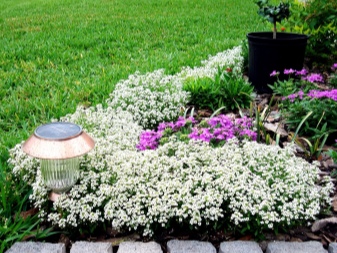
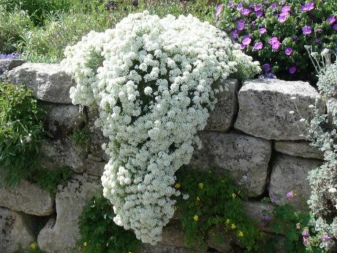
The ever-flowering begonia is definitely among the best. Despite the brightness of the flowers, they have a simple structure. The species can bloom until the onset of frost. If for some reason two such options do not suit, then lobelia is perfect.
After the growth of the lobelia, the shoots on the ground soon form an independent plant.
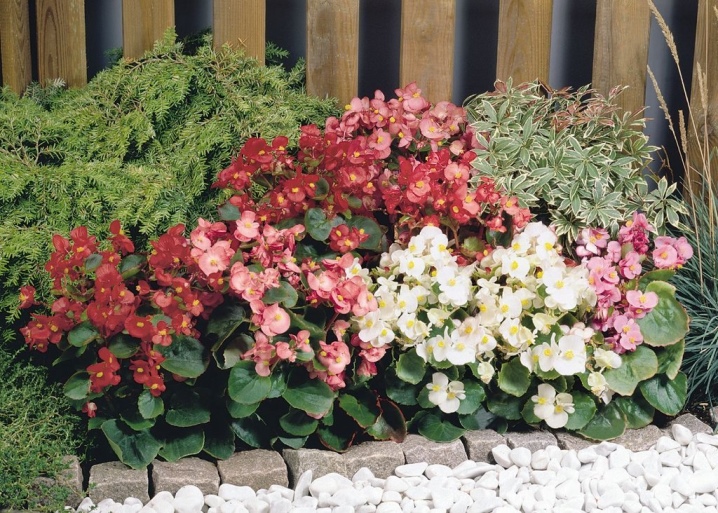
The culture looks very good both in the flower bed and in the flowerpot. In terms of attractiveness, however, ageratum can confidently compete with it. Its dense bushes are covered with flowers of various tones. By varying the appearance and color of the ageratum, you can create a unique floral ornament.
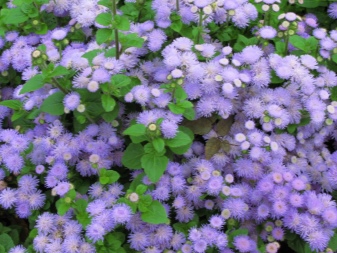

Also from among the annuals deserve attention:
- phlox;
- umbrella Iberises;
- hybrid mimulus;
- open sanitation;
- cup hypericum.
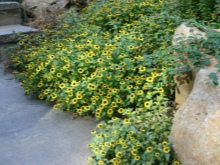
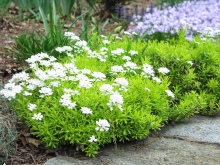
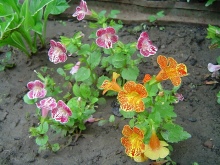
Landing
A subulate phlox needs a lot of light. It is categorically impossible to plant it in excessively humid places. There, the culture is weakening and may even perish. It is paradoxical that subulate phloxes on fertile soil do not live up to the expectations of the grower. They will produce a lot of greenery, but they will bloom very little.
The sedum plant is planted in open ground using seedlings. It is necessary to sow seeds for it in March and April. The soil can be any, but you will have to use mineral fertilizer. The sedum will grow equally well in any area, regardless of its illumination. Stony soil is also fine.
Care
Aubrietta is well-bred with seeds. But despite the simplicity of sowing them in open ground, this can lead to mixing of varietal traits. Sowing for seedlings is carried out approximately 2-2.5 months before the onset of stable heat. The usual potting substrate or peat tablets are used. During the cultivation of seedlings, it is carefully protected from excessive moisture.

The cultivation of bryozoans will not cause any particular difficulties. Seeds for seedlings are sown in medium-sized containers filled with moistened soil. Be sure to use a cover with a film.
Landing at a permanent place is carried out at the junction of April and May.
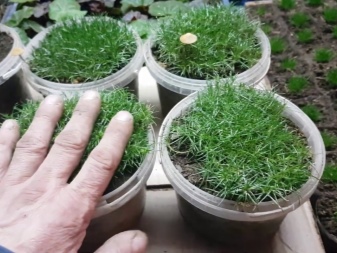
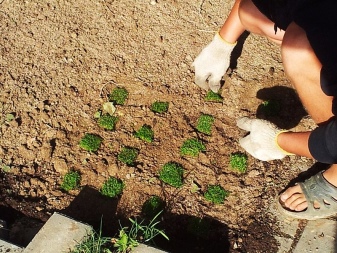
Subulate phloxes are watered only in very dry and hot weather. When the plant has bloomed, it should be trimmed, getting rid of surviving stems and leveling the bush. Important: in the last third of summer, a haircut can lead to the loss of flower buds, and therefore it should be done earlier. The plant survives the winter well even without a special shelter. It only harms the absence of snow or the frequent alternation of thaws and frosts.
The sedum should be fed with organic matter or a complex mineral mixture in spring and autumn. The use of manure is discouraged. It is advised to pay special attention to the prevention and control of fungal rot. Watering the sedum is necessary only with a long and persistent drought. Timely shortening of the stems is very important.
Watering the obrietta is carried out in approximately the same cases as watering sedum.
Sprinkler irrigation is recommended rather than conventional irrigation methods.

After each watering or rain that falls, the ground must be loosened. It is advisable to combine this procedure with weeding. During active growth, the obrietta needs to be mulched abundantly twice or three times.
Subulate bryozoans tolerate frost well. Even in winters with little snow, a good shelter is a sufficient measure of protection. Young plants need protection from sunburn with a spunbond. In the first 14 days after planting, Icelandic moss is watered daily. Then, even in hot periods, watering is needed a maximum of 1 time in 2-3 days.
Use in landscape design
For paths in the country, or rather for framing their perimeter, shaved is very well suited. It is also recommended for use in rock gardens. If you are not limited to this culture and other plants creeping for flower beds, it is worth separately characterizing the use of felt chippings. It is used to design:
- curbs;
- alpine slides;
- decorating stone walls.
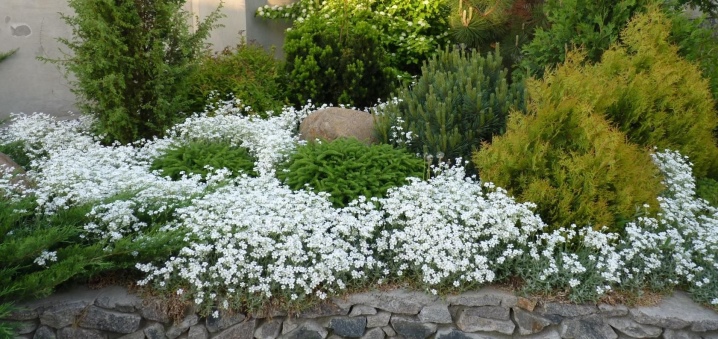
If you need to mulch the tree trunk circle, slowly growing sedum and periwinkle will do. The sedum can also be used to decorate a garden path. Along with it, phlox and primroses are widely used in such places. Drought-tolerant crop lawns can be set up anywhere, but remember that there is no way to walk on them.
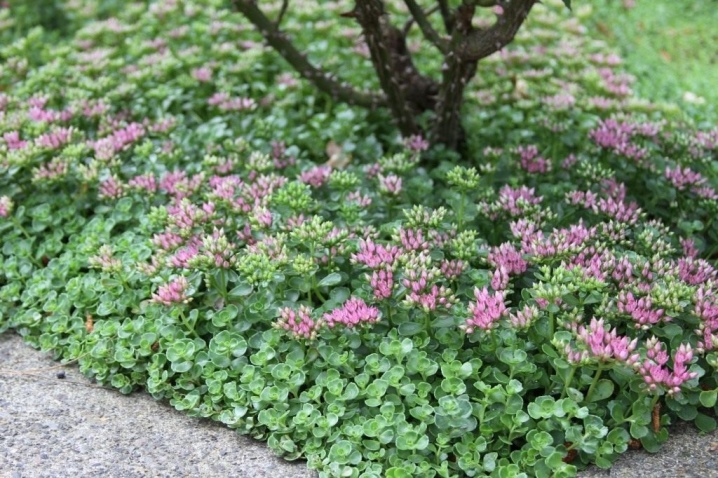
Important: almost any ground cover, with rare exceptions, grows very quickly. You will have to carefully monitor this process in order to avoid bad consequences.
The individual characteristics of each species also deserve attention. Contrary to popular belief, for example, the same phlox can be used not only as the main background. The optimal combination of this type with the following colors:
- asters;
- astilbe;
- daylilies;
- heleniums;
- monards;
- wormwood;
- marigolds.
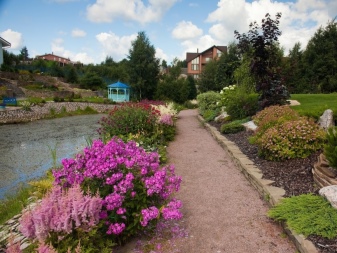
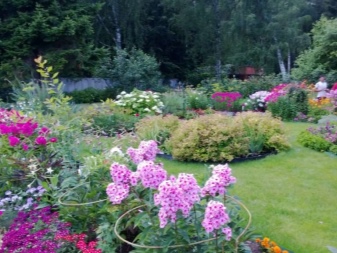
Sedum is actively used as autonomous tapeworms. With their help, it is easy to arrange a large carpet area (lawn). But you can make multi-level flower beds on the basis of these plants, which will also look gorgeous. It is often advised to surround fountains, ponds and natural reservoirs with stonecrops. Sedum can be used in conjunction with other discreet, not too widely spread perennial crops.
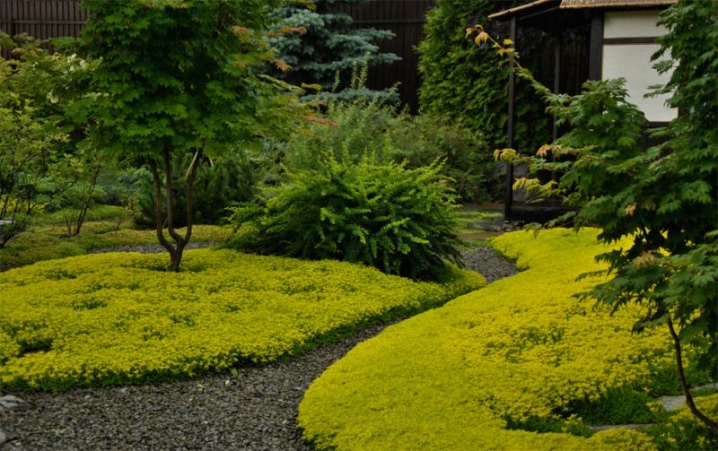







































































































The comment was sent successfully.